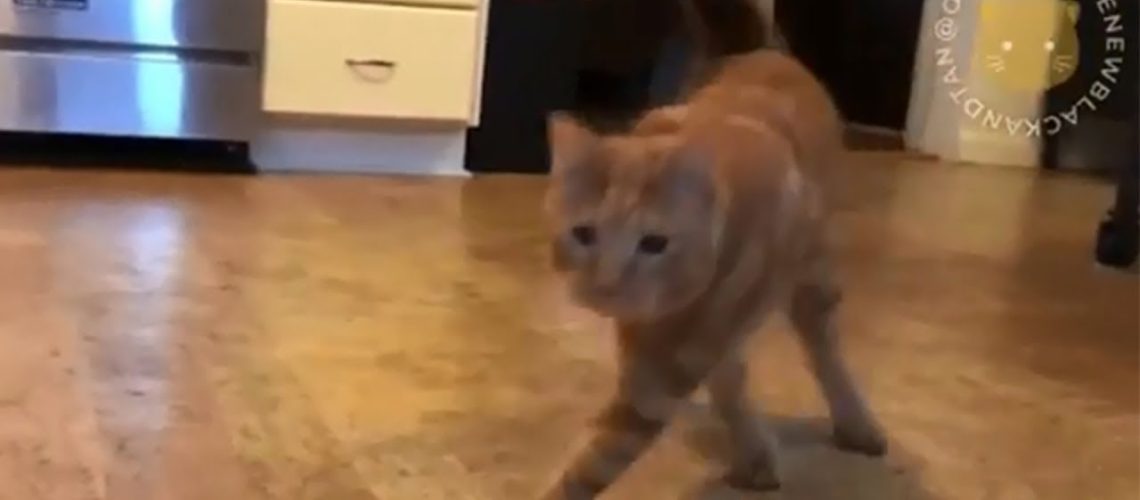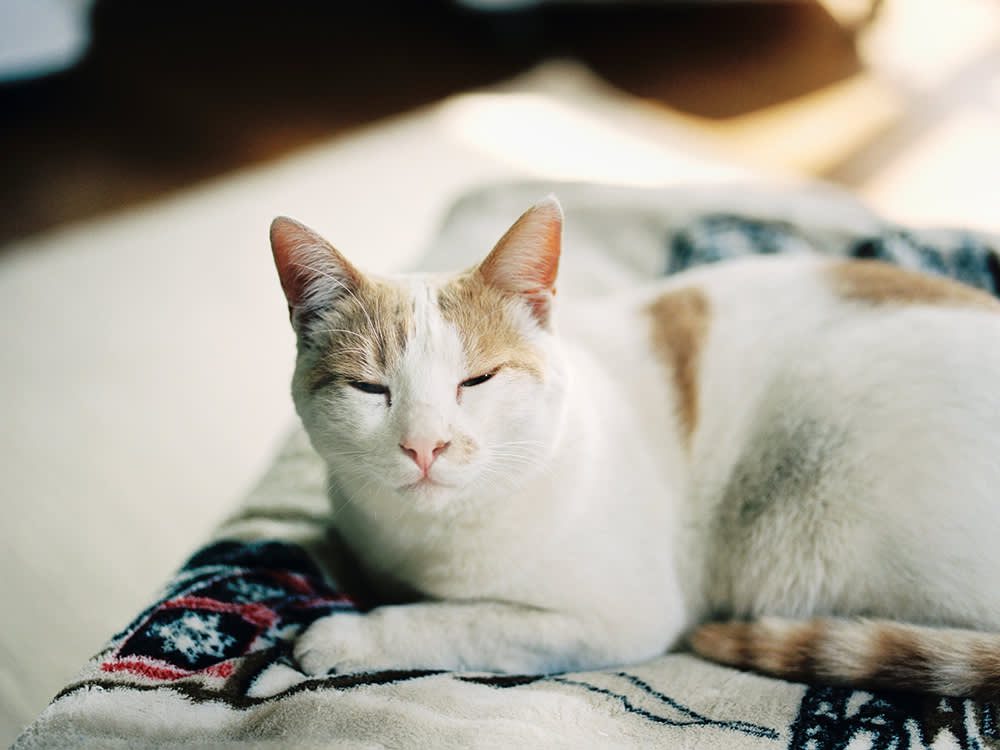Are you fascinated by the mysterious world of cats and their unique behaviors? If so, get ready to unravel the secrets behind a condition that affects our feline friends – Feline Cerebellar Hypoplasia, or as it's commonly known, "the wobbles." Understanding this topic is not only essential for cat lovers and owners but also for anyone curious about the intricacies of animal health. Join us on a journey where we delve into the fascinating world of feline neurology, exploring how this condition affects cats' movements and their ability to navigate their surroundings with grace. Prepare to be amazed by the resilience and adaptability of these incredible creatures as we uncover the hidden truths behind Feline Cerebellar Hypoplasia. Get ready to have your mind blown!
Key Takeaways:
- Feline cerebellar hypoplasia is a neurological condition that affects the development of a cat's cerebellum, resulting in poor coordination and balance.
- The condition is usually caused by an infection or trauma during the mother cat's pregnancy, but it can also be inherited genetically.
- Cats with cerebellar hypoplasia can lead happy and fulfilling lives with proper care and accommodations.
- It is important to provide a safe environment for cats with cerebellar hypoplasia to prevent injuries and promote their independence.
- While there is no cure for feline cerebellar hypoplasia, supportive therapies such as physical therapy and environmental modifications can help improve the quality of life for affected cats.
What is Feline Cerebellar Hypoplasia and how does it affect cats?
Feline Cerebellar Hypoplasia (FCH) is a neurological condition that affects the cerebellum, which is the part of the brain responsible for coordinating movement and balance. Cats with FCH have an underdeveloped cerebellum, which leads to difficulties in controlling their movements.
When a cat has FCH, they may have shaky or uncoordinated movements, often described as a "wobbly" or "drunken" gait. They may also have trouble with balance and tend to fall or stumble frequently. These symptoms can range from mild to severe, depending on the severity of the condition.
Causes of Feline Cerebellar Hypoplasia
FCH is typically caused by an infection during the early stages of fetal development. The most common cause is exposure to the feline panleukopenia virus (FPV) while in utero. Kittens can also develop FCH if their mother was infected with FPV during pregnancy.
The FPV virus affects the developing cerebellum in kittens, leading to its underdevelopment. It's important to note that FCH is not contagious between cats and cannot be transmitted from one cat to another after birth.
Risk Factors for Feline Cerebellar Hypoplasia
- Kittens born to mothers who were infected with FPV during pregnancy are at a higher risk of developing FCH.
- Poor nutrition during pregnancy can increase the risk of FCH in kittens.
- Exposure to other infections or toxins during fetal development can also contribute to the development of FCH.
Can Feline Cerebellar Hypoplasia be cured or treated?
Unfortunately, there is no cure for Feline Cerebellar Hypoplasia. The condition is permanent and cannot be reversed. However, with proper care and accommodations, cats with FCH can lead happy and fulfilling lives.
Treatment for FCH focuses on managing the symptoms and helping the cat adapt to their condition. This may include providing a safe environment that minimizes the risk of injury, such as removing sharp objects or blocking off high places where the cat could fall from.
Physical Therapy for Cats with FCH
In some cases, physical therapy exercises can help improve muscle strength and coordination in cats with FCH. These exercises may include gentle stretching, balance training, and targeted movements to encourage better control over their body.
Medications for Symptom Management
In certain situations, medications may be prescribed by a veterinarian to help manage specific symptoms associated with FCH. For example, if a cat experiences seizures as a result of their condition, anticonvulsant medications may be recommended to reduce seizure activity.
Can Feline Cerebellar Hypoplasia be cured or treated?
Feline Cerebellar Hypoplasia (FCH) is a condition that affects the development of a cat's cerebellum, which is responsible for coordinating movement and balance. Unfortunately, there is no known cure for FCH. The condition occurs due to an underdevelopment of the cerebellum during the cat's early stages of growth, often as a result of viral infections or genetic factors. However, while it cannot be cured, there are ways to manage and improve the quality of life for cats with FCH.
Treatment options
While there is no specific treatment to reverse or eliminate FCH, supportive care can greatly benefit affected cats. This includes providing a safe and comfortable environment that minimizes potential hazards such as stairs or sharp objects. Additionally, regular veterinary check-ups are crucial to monitor the cat's overall health and address any secondary issues that may arise.
Physical therapy
Physical therapy can also play a significant role in managing FCH. It involves exercises and activities designed to improve muscle strength, coordination, and balance in affected cats. These exercises can include gentle stretching, obstacle courses, and balance training.
Dietary adjustments
In some cases, dietary adjustments may be recommended by a veterinarian. Cats with severe mobility issues may require special diets to maintain a healthy weight and prevent obesity-related complications.
Overall, while there is no cure for Feline Cerebellar Hypoplasia, appropriate management strategies can significantly enhance the well-being of affected cats.
What are the common symptoms of cats with Feline Cerebellar Hypoplasia?
Cats with Feline Cerebellar Hypoplasia exhibit distinct symptoms that indicate their condition. These symptoms typically become apparent within a few weeks after birth and can vary in severity from mild to severe. It's important to note that FCH is not a painful condition, and affected cats can live fulfilling lives with proper care.
Loss of balance and coordination
One of the most noticeable symptoms of FCH is a lack of balance and coordination. Affected cats may have difficulty walking in a straight line, stumble or fall frequently, or exhibit an unsteady gait. They might also struggle with tasks that require precise movements, such as grooming themselves or using a litter box.
Tremors or head bobbing
Another common symptom is tremors or involuntary head bobbing. These movements are caused by the underdeveloped cerebellum's inability to control muscle coordination effectively. The severity of these tremors can vary among cats, with some experiencing mild shaking while others have more pronounced movements.
Unusual eye movements
Cats with FCH may also display abnormal eye movements known as nystagmus. This condition causes the eyes to move rapidly back and forth or in circular motions instead of remaining still. While it may appear concerning, it does not cause any pain or discomfort for the cat.
In conclusion, the common symptoms of Feline Cerebellar Hypoplasia include loss of balance and coordination, tremors or head bobbing, and unusual eye movements. Recognizing these symptoms early on can help owners provide appropriate care for their furry companions.
Can cats with Feline Cerebellar Hypoplasia live a normal life?
Despite their unique challenges, cats with Feline Cerebellar Hypoplasia (FCH) can lead fulfilling lives with proper care and support from their owners. While they may never achieve the same level of coordination as unaffected cats, they can adapt to their condition and thrive in a safe and loving environment.
Adapting to their condition
Cats with FCH have an incredible ability to adapt to their condition. They learn to compensate for their lack of coordination by using alternative strategies, such as wider stances or relying more on their front legs for stability. With time, they become more confident in their movements and can navigate their surroundings with relative ease.
Emotional well-being
It's essential to prioritize the emotional well-being of cats with FCH. Providing them with a stable and stress-free environment helps reduce anxiety and promotes a sense of security. Regular playtime, interactive toys, and positive reinforcement training can also contribute to their overall happiness.
Supportive care
Owners can offer supportive care by ensuring easy access to food, water, litter boxes, and comfortable resting areas. Soft bedding or padded surfaces can help prevent injuries from falls. Regular veterinary check-ups are crucial to monitor the cat's health and address any potential complications promptly.
In conclusion, while cats with Feline Cerebellar Hypoplasia may face unique challenges, they can live fulfilling lives when provided with appropriate care, love, and understanding from their owners.
How can cat owners help their pets with Feline Cerebellar Hypoplasia lead a comfortable life?
As a cat owner, there are several ways you can help your furry friend with Feline Cerebellar Hypoplasia (FCH) lead a comfortable life despite their condition. By creating a safe environment and providing necessary support, you can ensure that your cat thrives both physically and emotionally.
Safety measures at home
To minimize potential hazards for your cat with FCH, make sure your home is safe and accessible. Remove any sharp objects or clutter that could cause injuries during falls. Consider installing ramps or providing steps to help your cat reach elevated areas without straining themselves. Additionally, secure windows and balconies to prevent accidental falls.
Assisting with grooming
Cats with FCH may struggle with grooming due to their lack of coordination. As an owner, you can assist them by gently brushing their fur and ensuring it remains clean and free from mats or tangles. Regular nail trims are also important to prevent overgrowth and discomfort.
Feeding and hydration
Ensure that your cat has easy access to food and water at all times. Elevated food bowls can make eating more comfortable for cats with FCH, as they don't have to strain their necks or bend down too far. Monitor their weight closely and consult with a veterinarian if any dietary adjustments are necessary.
Playtime and mental stimulation
Engaging in playtime activities is crucial for cats with FCH as it helps improve muscle strength, coordination, and mental stimulation. Use interactive toys that encourage movement or engage in gentle play sessions that cater to your cat's abilities. Puzzle toys can also provide mental stimulation while keeping them entertained.
In conclusion, by implementing safety measures at home, assisting with grooming, ensuring proper feeding and hydration, and engaging in playtime activities, cat owners can help their pets with Feline Cerebellar Hypoplasia lead comfortable lives filled with love and care.
Are there any precautions or safety measures that need to be taken for cats with Feline Cerebellar Hypoplasia?
Cats with Feline Cerebellar Hypoplasia (FCH) require certain precautions and safety measures to ensure their well-being. By taking these steps, owners can minimize the risks associated with their condition and create a safe environment where their furry companions can thrive.
Safety-proofing the home
To prevent accidents and injuries, it's important to safety-proof your home for a cat with FCH. Remove any potential hazards such as sharp objects, toxic plants, or chemicals that could harm them. Secure loose cords or wires to prevent entanglement, and cover electrical outlets to avoid accidental shocks.
Minimizing falls
Cats with FCH are prone to stumbling or falling due to their lack of coordination. To minimize the risk of injuries from falls, provide soft surfaces or padded bedding in areas where they spend most of their time. Avoid placing furniture near edges or stairs that could lead to dangerous falls.
Supervision outdoors
If you allow your cat outside, it's crucial to supervise them closely. Cats with FCH may have difficulty navigating uneven terrain or escaping from potential dangers. Consider creating an enclosed outdoor space or using a harness and leash for controlled outdoor exploration.
Veterinary care
Regular veterinary check-ups are essential for cats with FCH. These visits allow the veterinarian to monitor their overall health, address any emerging issues promptly, and provide necessary vaccinations. Follow your veterinarian's recommendations for vaccinations and parasite prevention tailored specifically for your cat's needs.
In conclusion, by safety-proofing the home, minimizing falls, supervising outdoor activities, and prioritizing regular veterinary care, owners can ensure the safety and well-being of cats with Feline Cerebellar Hypoplasia. Taking these precautions allows these special feline companions to live happy and healthy lives.
In conclusion, feline cerebellar hypoplasia is a condition that affects cats' balance and coordination. It is important to understand this condition so we can provide proper care and support for these special cats.
Do cats with cerebellar hypoplasia wobble in their sleep?
Their head may exhibit a shaking or bobbing motion while eating, resembling pecking behavior. These symptoms are more pronounced during activities like eating, drinking, or walking. Interestingly, cats with CH show no signs of these movements when asleep.
What is wobbly cat syndrome cerebellar hypoplasia?
Cerebellar hypoplasia, commonly known as 'wobbly kittens' or 'wobbly cats', is a unique neurological disorder caused by a disruption in brain development. This results in uncoordinated movement or ataxia.
How long do cats with wobbly cat syndrome live?
Regrettably, there is currently no cure for cerebellar hypoplasia in cats since it develops while they are still in the womb. However, even though cats with wobbly cat syndrome may experience challenges with walking, standing, running, or jumping, the majority of them can still live a normal lifespan and make wonderful pets.
How does wobbly cat syndrome happen?
Cerebellar hypoplasia, also known as wobbly cat syndrome, is a birth defect in cats that is not contagious or degenerative. It typically occurs when a pregnant cat contracts feline panleukopenia virus and passes it on to her unborn kittens.
Can cats with cerebellar hypoplasia use the litter box?
For instance, certain cats with cerebellar hypoplasia (CH) may require a litter box with a low entrance. On the other hand, some cats may need litter boxes with high sides if they have a tendency to lean while using it. In cases where a cat has severe CH and is unable to walk, a litter box may not be feasible at all.
Should cats with cerebellar hypoplasia be put down?
If your cat has cerebellar hypoplasia (CH), you may be concerned about whether euthanasia is the best option. However, there is no need to worry, as most cats with CH lead happy and healthy lives without pain.

















